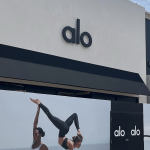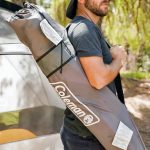At first look, September retail sales took a hit from multiple hurricanes in the Southeast and unseasonably warm weather in the Midwest. However, on closer review, it appears that the sluggish and mostly negative — results reported by most retailers in the month may go to much deeper issues that may not bode well for the Holiday selling season.
Higher gasoline and food prices, coupled with a weak job market and the prospect of higher winter heating costs, look to conspire to curtail spending by many low- and middle-income families. There is also some concern by analysts that the less-than-exciting economy may be finally affecting the upper-end bracket as well.
The job growth figures released Friday showed a net increase of 96,000 jobs, a number that was a full third lower than Wall Street expectations.
But some analysts see the issue as a wage issue rather than a job issue.
“It's not about jobs. It's all about wages,” said Richard Hastings, a Bernard Sands retail analyst. “People are finding jobs, but the wage levels are often not sufficient to fuel an ordinary increase in personal spending.”
“There's definitely some anxiety out there on the part of consumers,” said Ken Perkins, a research analyst at RetailMetrics LLC.
The hurricanes that affected most of Florida and much of the Southeast may have actually had a positive impact on some stores that saw consumers stocking up on emergency goods and restocking their homes after FEMA quickly turned around disaster checks.
According to the International Council of Shopping Centers survey of 71 chain retailers, sales for September rose just 2.4%, slightly better than the 2.0% increase that was forecast, but well below the 5.9% increase seen last year. Still, the September results, which benefited from the shift of pre-Labor Day sales from August, was an improvement over the anemic 1.3% gain posted in August.
The Goldman Sachs composite index of same-store sales, weighted by sales volume, increased 1.9% in September, below the 2.1% forecast and far less than the 5.9% gain last year.
September marked the fourth consecutive month of weaker sales gains after an average 6.0% increase through the first five months of the year.
John Morris, senior retail analyst at Harris Nesbitt, said in one report that the September results send “mixed messages across the landscape of the mall” on how the holiday season will fare. “There are some positive reads for teens, cautious reads for the women's adult apparel,” he said. “Upscale retailers are holding their own, but it is anyone's guess how much longer that echelon can be insulated from signs of a consumer slowdown.”
High-end Department Stores still outpaced the market, but to a lesser degree in September. Nordstrom comps were up 6.2%, Saks Fifth Avenue increased 5.8%, and Neiman Marcus rose 5.6%. Overall, Department Stores reported a 0.7% decline. The Bon-Ton saw the biggest Department Store decline for the month, due primarily to the impact of dreadful declines at the recently-acquired Elder-Beerman chain.
Wholesale Clubs again posted the biggest gains, increasing 6.6% for the month. BJ Wholesale increased 8.3% and Costco gained 8.0% for the month.
Footwear Stores continued their string of negative comp sales results, declining an average of 3.4%. The one big exception was Brown Shoe Companys Famous Footwear unit, which posted a 4.7% same-store sales gain for the month, due in large part to strength in Athletic sales. Payless comps were down 6.5%.
“The back-to-school season started late for Famous Footwear,” said Brown Shoe chairman and CEO Ron Fromm, indicating that sales for the total period fell short of expectations. Famous saw a net decline of 1.3% for the August/September BTS period. YTD comps were down 0.4%.
Athletics increased mid-single digits on a same-store basis for the BTS selling period. Dress footwear was also up in mid-singles. The Kids' business was flat. Total Women's footwear was down for the two months, with the Casual category showing the largest decline.
Total sales at Famous Footwear increased 8.9% to $104.0 million in September from $95.5 million in the year-ago period.
Based on quarter-to-date results, which included an 8.1% drop in comps at the companys Naturalizer division, BWS is forecasting that Q3 EPS will be in the 90 cents to $1.00 per diluted share, versus $1.13 per share in the year-ago quarter. Full year 2004 results are seen in the $2.55 to $2.65 per diluted share range, versus $2.52 per diluted share in fiscal 2003.
Shoe Carnival wasnt as fortunate in the period, but also saw Athletics lead all category sales. President and CEO Mark Lemond pointed to the hurricanes and warmer Midwest weather for a 1.9% comp store sales decline in September. Total sales increased 4.2% to $46.3 million from sales of $44.4 million in September last year.
The Womens business was down in the high-teens and Mens was down in high-single-digits. Sales of Womens Boots were down 40% due to the unseasonably warm weather.
Childrens, which also includes Childrens Athletics, was flat to last year. Mens and Womens Athletics were up “just into double-digits”. Total Footwear was down 2.3%, but Accessories were up in high-single-digits.
Kerry Jackson, EVP and CFO, said he estimates that about 70% of the comp store sales loss was attributable to the effects of the hurricanes.
The retailers northern stores were down more than 3.0%, while the southern stores were flat to last year.
Lemond said he expects sales of boots and other types of fall footwear to accelerate as cooler temperatures prevail. However, he said that if sales of fall merchandise do not accelerate in October, it is unlikely SCVL will achieve its previously stated third quarter earnings guidance 38 cents to 42 cents per diluted share, which was based on a same-store sales increase in the 2% to 3% range for the quarter.
DSW Shoe Warehouse saw its string of positive comp sales months come to a close, posting a 5.0% decline for the month versus a 16.9% gain in September last year. Total sales increased 10.8% to $96.6 million from $86.9 million in the year-ago period for the family footwear division of Retail Ventures, Inc.
Shoe Pavilion reported that sales for the fiscal third quarter ended October 2 decreased 4.2% to $20.7 million from net sales of $21.6 million for the year-ago period. Comparable store net sales decreased 6.3% for the 2004 third quarter versus a 4.7% comp sales gain last year.
Specialty Apparel stores were off 1.1% for the month, but were flat when excluding the 3.0% decline at the GAP. American Eagle Outfitters led the sector with a jump of 23.3%.
Pacific Sunwear, which is not included in the ICSC tally, saw consolidated same-store sales increase 9.8% for September on top of an 18.5% increase in September last year. PacSun comps were up 10.6%, on top of a 17.8% increase last year, and d.e.m.o. same-store sales increased 3.9% in top of a very strong 24.2% comp sales gain in the year-ago period. PSUN estimates that store closures from the hurricanes impacted the PacSun comps by about one percent, while d.e.m.o. comps were impact approximately 2.0% for the month.
Comp sales gains were weakest in Florida, the Southeast, and Texas, while California, Hawaii, the Northwest, New England and the Mid-Atlantic states showed the most strength.
By category, the Guys business was up in high-single-digits at PacSun, driven by strong sales of woven shirts, denim, and sneakers. Girls comps were up in the mid-teens, driven by t-shirts, knits, denim, skirts, bags, and sneakers. At d.e.m.o., Guys comps were down in low-single-digits, while the Girls business was up in the high-teens.
Total PSUN September sales increased 20.8% to $98.9 million from sales of $81.9 million in the same month last year.
The August/September Bask-to-School period was up 6.0% on a comparable sales basis, besting the retailers 5.0% forecast. PSUN is forecasting a 5.0% same-store sales increase for October, which would result in a 5.8% gain for the fiscal third quarter. The company expects inventories at quarter-end to be up about 3% to 5% on a per square foot basis.
The Buckle eked out a same-store sales gain for September, posting a 0.3% increase for the month. Total sales increased 4.6% to $43.4 million from sales of $41.5 million in September 2003.
Discounters gained 2.5% as a segment, with Target leading the gains with a 5.6% comp sales increase for the month. Months look rosier here now that the company has dumped the Mervyns and Marshall Fields businesses.
West Marine reported that net sales for September decreased 3.7% to $54.5 million from $56.6 million in the same month last year. Comp store sales fell 6.5% for the month. WMAR said their Western stores declined 3.7%, the Northeast fell 8.5%, and the Southeast decreased 6.5% in September.
CEO John Edmondson pointed to the hurricanes that “had a more pronounced and widespread impact” than anticipated. Edmondson said the lower-than-expected September sales and higher-than-expected hurricane preparation and recovery costs was leading the retailer to lower its third quarter earnings estimate to 32 cents per share, including write-downs of storm-damaged merchandise.
The Forzani Group Ltd. said heavy competitor discounting in the August/September BTS selling period impacted sales for the period, forcing Canadas largest sporting goods retailer to revise its Q3 earnings forecast downward.
FGL reported that total retail system sales, which includes both corporate and franchise stores, were down 1.8% for the eight week period ended September 27. Total comparable stores sales were down 4.6% to $152.6 million.
Corporate store comps were down 5.2% for the period, while Franchise store comps inched up 1.4% for the two months. Sales in August were said to be “lower than anticipated”, partially offset by a strong September that saw “sustained positive comparable sales for the entire month.”
Third quarter earnings are now expected to be in the 84 cents to 90 cents per share range, down significantly from previous guidance in the $1.02 to $1.10 per share range, and roughly even to the 86 cents per share achieved in Q3 last year.
Forzani CEO Bob Sartor said that the retailers back-half loaded promotional plans, which began in September, “should continue to stimulate sales for the balance of the year.”
Michael P. Niemira, ICSCs chief economist, is forecasting that Holiday comp store sales will increase in the 3.0% to 4.0% range versus a 4.0% increase in the year-ago period. As SEW reported in SEW_0440, the National Retail Federation is estimating that November/December Holiday sales will increase 4.5% versus a 5.1% gain in 2003.
Merrill Lynch released a report Friday that appears to be more optimistic about stronger retail sales in October compared to the 2.0% increase reported in its September results. The ML report is forecasting October sales to increase between 3.5% and 5.5% compared to October last year. The report expects cooler fall weather in parts of the country will boost apparel sales.
Meanwhile, a report based on Retail Forward's Index of Future Spending said the late-summer soft patch in consumer spending is expected to persist into the early fall, according. The Index slipped to 100.7 in October from 102.7 in September, indicating that spending at retail will let up somewhat in this month.
“The softer pace of sales expected this month is the result of moderating spending plans among Middle and Down Market households, offsetting a further strengthening among those in the Up Market,” said Steve Spiwak, an economist with Retail Forward. “The result should be healthy sales at high-end retailers in October, while discount retailers should see sales continue to grow at a modest pace as the holiday shopping season approaches.”
The NPD Group reported in its latest survey of consumer holiday buying intentions that the 2004 holiday shopping season could be challenging for retailers. NPD asserts in the report that nearly nine out of ten consumers say they are planning to spend the same amount or less than last year.
Sixty-nine percent of American consumers indicated they plan to spend the same amount this holiday as last year; 18% plan to spend less than last year and 12% plan to spend more. On average, consumers tell NPD they plan to spend $655 over the holidays.
“Year over year, it appears from our surveys that consumers are slowly but surely losing their passion for holiday shopping,” said Marshal Cohen, chief industry analyst for The NPD Group. “But that doesn't mean merchants should lose heart — we are seeing some important growth opportunities. It's up to the retailers to be vigilant and proactive.”
“Those merchants who will ignite the consumers' interest will thrive and those who repeat what they've done in the past will simply survive,” said Cohen.
>>> Kinda sounds like the ol Survival of the Fittest theory, a theory that holds true more today than ever…















